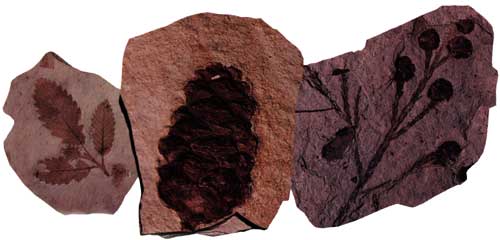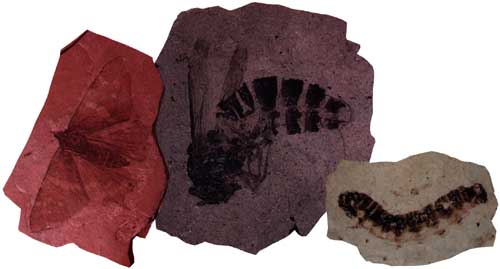
Florissant Fossil Beds National Monument


An early settler from Florissant, Missouri named this area after his hometown. 34 to 35 million years ago, this valley was dominated by Lake Florissant, stretching 12 miles through an ancient forested valley and averaging 1 mile in width. Lush ferns and shrubs lived beneath redwoods, pines, cedars, and a mixed-hardwood forest. There were thousands of insects in the humid climate. Mollusks, fish, birds, and mammals lived in or around the lake.
Again and again volcanic mudflows blanketed parts of the valley, one of them responsible for the creation of the lake. Now, each time the volcano erupts it showers the area with tons and tons of ash and pumice. Each rainfall washes the fine ash into the lake where it slowly covers the remains of creatures that have died and sunk to the bottom. Eventually these sediments become shale, transforming the buried remains into fossils.
Today, Florissant Fossil Beds National Monument preserves this internationally renowned site. More than 50,000 specimens have been collected by paleontologists working here. As so much of the lake life is preserved here, very little of the other forms of life that inhabited the area are preserved. Unless a bird or mammal died in or near the lake, its chances of preservation were very slim.

The remains of prehistoric plants and animals are relatively young in geologic terms. Florissant fossils have much to say about life in the late Eocene Epoch, about 30 million years after the last of the dinosaurs and about 33 million years before the first humans. Most of the fossils found here are studied and kept at various universities and museums, with a few displayed in the park visitor center. Unfortuantely, many others were taken as souvenirs over the years and the knowledge they may have imparted was lost. The park now protects millions of undisturbed fossils and studies a limited number that are excavated each year.
Fossils of more than 140 species of plants have been found at Florissant. These consist mostly of leaves but twigs, cones, seeds, flowers and pollen grains have also been found. There are also massive petrified stumps of giant redwood trees where volcanic mudflows buried them millions of years ago. The record in the stone suggests that the ancient forest was unlike any now in Colorado. Trees and shrubs grew here whose closest living descendants are now found in the southeastern United States, Mexico and China.
While insects are usually too fragile to be preserved as fossils, the fine volcanic ash did such a good job here that many thousands of insect fossils have been recovered from the shale. More than 1400 species have been described from the findings here. The fossils show that the insects of 34-35 million years ago were very similar to today's, however, many types that are found here no longer exist in Colorado. Some, like the tsetse fly, no longer live in North America and others are extinct.

Fossils are studied in the context in which they are found and as one element in a community of organisms. Some of the insect fossils are found coupled with the leaves that they lived on. Because of this relationship, every fossil can serve as a key to unlock ancient knowledge. As most of the remains found here date from the Eocene Epoch, Florissant Fossil Beds serves as a wonderful repository of information. In the Eocene Epoch, mammals emerged as the dominant land animals on the planet. They also took to the air and the sea. The many variations included some of the earliest giant mammals. The fossil record reveals many mammals unlike anything seen today. However, as time went on, the forest plants, freshwater fish and insects became much more like those that we know now.
National Park Service Sites - BLM Sites - National Wilderness Areas - Unique Natural Features
Outdoor Sports & Recreation - Ski & Snowboard Areas - Photo Galleries - Colorado Mountains
